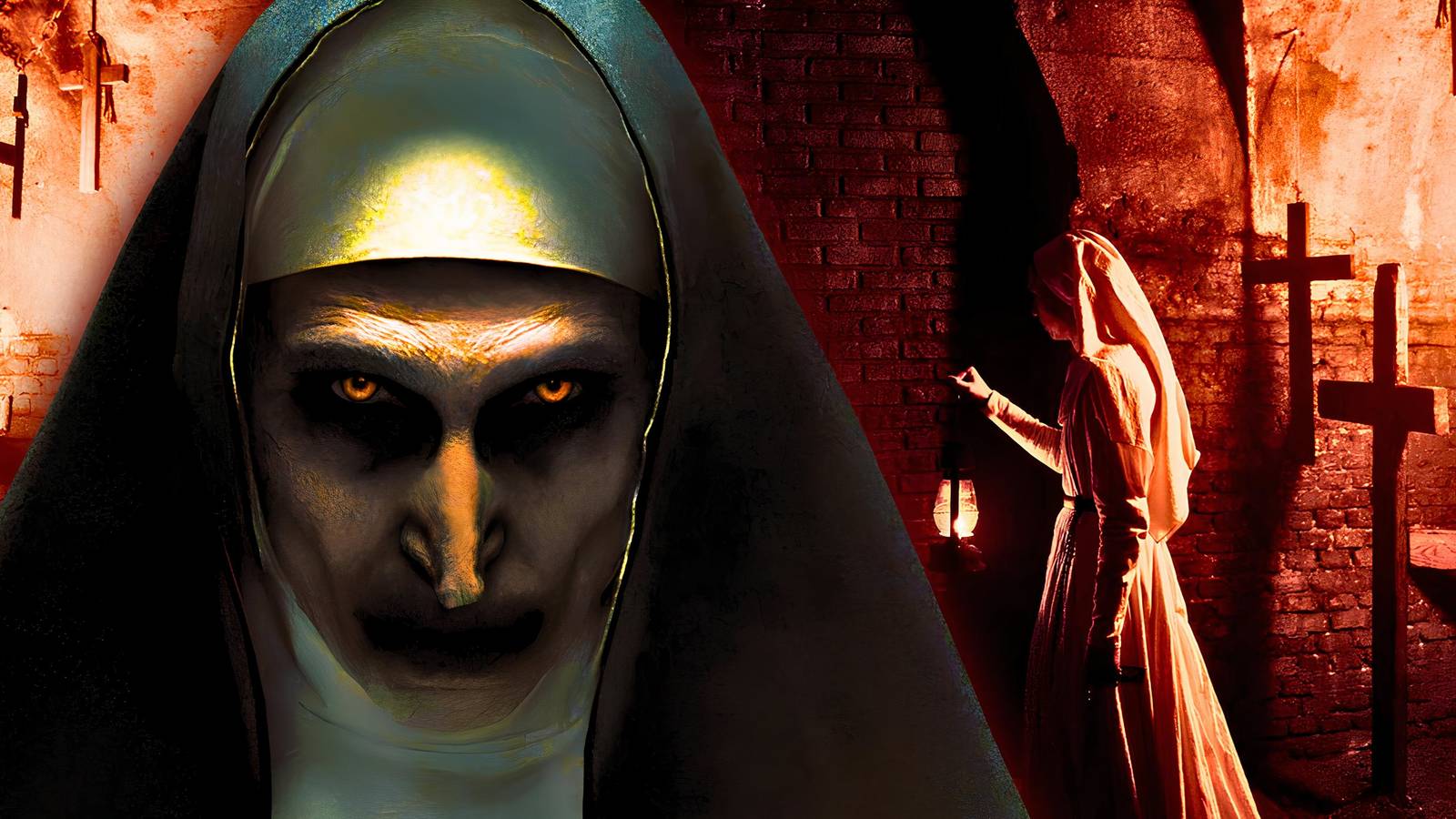When evil meets its maker, faith trembles. Annabelle vs Valak is not just a horror crossover — it’s the apocalyptic crescendo of The Conjuring Universe, a film that turns possession into poetry and dread into divine spectacle. It’s where creation defies its creator, and the two darkest icons of modern horror finally collide beneath the burning vaults of heaven and hell.

The film opens in silence, broken only by a trembling rosary. A failed exorcism in rural Romania sets the stage — the Annabelle doll, long contained under sacred wards, is being moved through the Vatican archives when the ritual goes catastrophically wrong. As the relic burns with unholy light, something ancient awakens beneath the monastery. The air changes. Candles weep wax like blood. Valak has heard the doll’s cry.
Vera Farmiga and Patrick Wilson return as Lorraine and Ed Warren, their faith cracked but unbroken. The years of confronting darkness have left them fragile, yet when Vatican officials call upon them to investigate the impossible, they step once more into the shadow. Taissa Farmiga’s Sister Irene joins them, tying together the spiritual threads from The Nun and Annabelle Comes Home in one sweeping narrative. The result is a gothic epic — part possession story, part theological war.
Director Michael Chaves crafts the film like a liturgical nightmare. Every frame bleeds with reverence and rot — cathedrals of light twisted into labyrinths of sin. The monastery, its frescoes alive with writhing angels, becomes a battlefield between heaven’s silence and hell’s laughter. Chaves doesn’t rely on cheap jolts; his horror is sculpted from awe. The walls breathe, statues weep, and prayers turn to screams that echo like psalms of despair.
Annabelle herself becomes more than an object of evil — she’s a vessel of rebellion, the cursed embodiment of humanity’s hubris. Valak, the defiler of sanctity, sees her not as a rival but as kin. Their connection is chilling: creation reaching back to its origin, corruption meeting its reflection. When the two entities merge in a sequence of blinding light and shadow, it’s not a battle — it’s a coronation. Evil reborn as unity.
Farmiga delivers her most powerful performance yet. Lorraine’s psychic visions blur the line between prophecy and damnation, her eyes reflecting both terror and grace. Wilson’s Ed, weary and sacrificial, becomes the film’s heart — his unwavering love the only force that dares challenge divine indifference. Taissa Farmiga’s Irene anchors the film with innocence and defiance, her presence turning theology into human courage. Together, the three form a trinity of resistance against forces too vast to comprehend.

The cinematography is a masterclass in gothic grandeur — halos of candlelight illuminating decay, crucifixes bent under invisible weight, and corridors that stretch like the veins of purgatory. The sound design builds unease layer by layer: a heartbeat beneath chants, whispers beneath silence. Composer Joseph Bishara returns with a score that feels like blasphemy turned symphony — strings groaning, choirs wailing, Latin hymns twisting into screams.
The third act is pure terror transcendence. As Valak and Annabelle’s power fuses, the monastery collapses into a vortex of darkness. Lorraine’s final confrontation — standing in a burning chapel, reciting a prayer that no longer believes in itself — is devastating and sublime. “Faith isn’t what saves us,” she whispers. “It’s what reminds us why we’re still fighting.”
In the aftermath, the Warrens survive — but barely. The doll is gone, the demon silent. And yet, as the camera pans over the ashes of the monastery, a single rosary bead rolls into frame — and stops beside a cracked piece of porcelain. Annabelle’s painted eye opens, just once.
Film Verdict:






